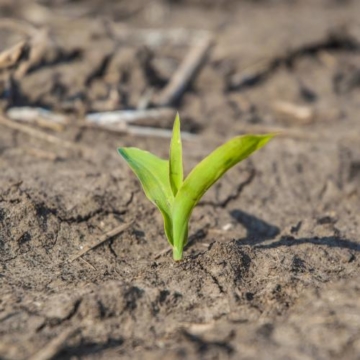Explore our blog featuring articles about farming and irrigation tips and tricks!
Don’t Sweat Early Frost Injury To Corn

By: Agronomy Insider
Upper Midwestern farmers have endured below- or near-freezing air temperatures the past few days. As a result, frost-injured corn in some regions of Minnesota has surfaced. The telltale signs of frost damage are initially discolored water-soaked leaves, which later dry and turn brown.
So what now? Here’s what to look for and consider from Jeff Coulter, University of Minnesota Extension corn specialist.
The Good News
It’s unlikely the damage will be permanent, thanks to the location of corn’s growing point at this time of year. In Minnesota, it’s currently about 0.75 inches below the soil surface. It will remain below the soil until the five leaf- or six leaf-collar stage. Frost prior to this point typically does not kill corn, unless prolonged cold temperatures freeze the upper part of the soil where the growing point is located.
Frost-damaged corn generally shows new leaf growth a few days after a frost if the growing point was not damaged. Therefore, delay assessment of damaged fields until at least three days after a frost, advises Coulter.
Larger corn plants damaged by frost can resemble buggy whips, as new vegetative growth tries to break free of dead tissue. Buggy-whipped plants generally recover, with a faster recovery rate for smaller plants and when warm and windy conditions occur after a frost.
Stay up to date on all T-L news and get alerts on special pricing!


